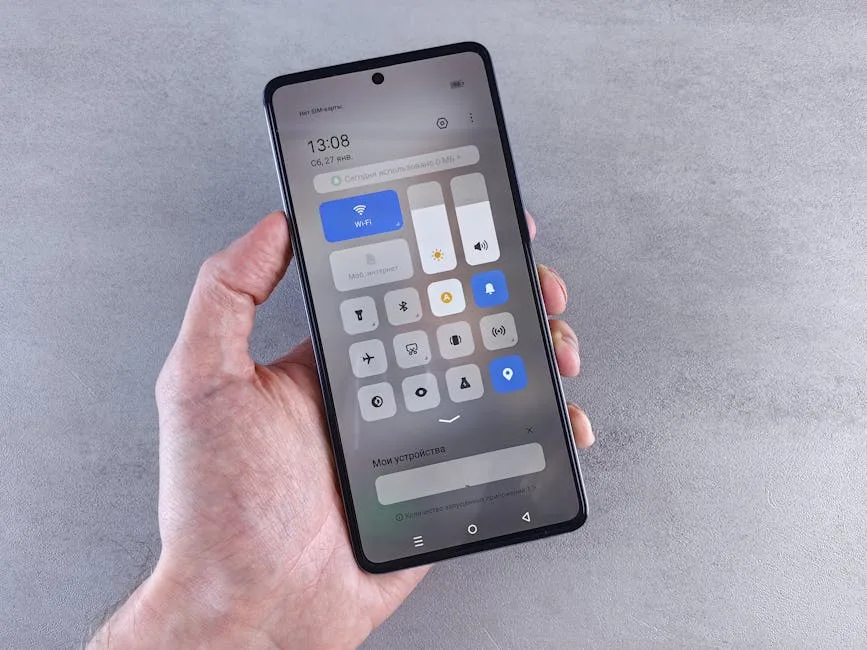
Google has announced a significant policy change for the Google Play Store, targeting Android applications that cause excessive battery drain through the misuse of background processes1. This initiative, developed in collaboration with Samsung, introduces a new metric to identify apps that hold “partial wake locks” for prolonged periods without clear user benefit2. Starting March 1, 2026, non-compliant apps will face reduced visibility on the Play Store and be marked with a public warning label on their listing7. This policy aims to address a long-standing user complaint and improve the overall Android experience by creating a direct incentive for developers to optimize their applications’ power consumption.
Technical Specifications and Enforcement Thresholds
The core of the new policy revolves around the management of “partial wake locks.” These are a standard system function that allows an application to keep the device’s CPU awake even when the screen is off, which is necessary for legitimate tasks like playing music or navigating2. The policy defines excessive use by establishing clear, quantifiable thresholds. For phones, a user session is flagged if an app accumulates more than two hours of non-exempt wake lock time within a 24-hour period1. An app becomes subject to penalties when more than 5% of its user sessions over a 28-day rolling period exceed this limit2. For wearable devices, Google will use an existing metric that flags apps draining more than 4.44% of a watch’s battery per hour during active use. The policy includes specific exemptions for wake locks held for system functions with clear user benefits that cannot be further optimized, such as active audio playback or user-initiated file transfers6.
Consequences for Non-Compliant Applications
Applications that consistently exceed the defined thresholds will face two primary consequences, effective from the enforcement date of March 1, 20267. The first is reduced visibility within the Play Store ecosystem. These apps will be excluded from prominent discovery surfaces, such as recommendation sections and other curated lists, which can significantly impact new user acquisition1. The second, and more direct, consequence is a public warning label. A red banner will be displayed on the app’s store listing page, stating: “This app may use more battery than expected due to high background activity”6. This public shaming mechanism is designed to inform users directly of potential performance issues before they download the application, potentially affecting download rates and user trust.
Developer Tools and Collaborative Development
In preparation for the policy’s enforcement, Google has made the new “Excessive Wake Lock” metric generally available to developers through Android Vitals, its platform for tracking app performance and stability2. This provides developers with the data needed to identify and rectify problematic behavior in their own applications. The development of this metric was a collaborative effort with Samsung, combining Samsung’s insights from real-world user experience with core Android platform data2. The policy and its underlying detection algorithm underwent a beta testing phase starting in April 2025, allowing Google to refine its accuracy based on feedback from the developer community before the full rollout.
The relevance of this policy extends beyond general user experience into the domain of enterprise and mobile security. Applications with poorly managed background activity can be indicative of sloppy coding practices, but in more severe cases, they can also be a sign of malicious behavior. Malware and spyware often rely on persistent background activity to exfiltrate data, maintain a connection to a command-and-control server, or monitor user activity. For security teams, an application that triggers this new battery warning could serve as a potential indicator of compromise, warranting further investigation, especially on corporate-managed devices. System administrators may consider incorporating this Play Store warning signal into their mobile device management (MDM) monitoring and application approval policies as an additional data point for assessing application risk.
For developers and security-conscious organizations, remediation involves proactive monitoring and optimization. Developers should immediately begin using the Android Vitals dashboard to review their application’s wake lock usage. The focus should be on identifying and eliminating unnecessary wake locks, ensuring that any held wake locks are released immediately after their intended task is complete, and leveraging more efficient APIs like WorkManager for background tasks where possible. Organizations managing a fleet of Android devices should update their application vetting procedures to include checks for this new warning label. They might also consider using MDM solutions to report on or even block the installation of applications that are flagged for excessive battery use, thereby reducing potential risk and improving device performance and battery life across the enterprise.
In conclusion, Google’s new Play Store policy represents a substantive effort to improve the baseline quality and performance of Android applications by directly tying battery consumption to an app’s commercial success on the platform. By providing developers with clear metrics and a long lead time until enforcement, Google is encouraging proactive optimization. The public warning system empowers users with more transparency, while the visibility penalties create a strong business incentive for compliance. For security professionals, this change introduces a new, publicly visible metric that can aid in the initial assessment of an application’s behavior, potentially helping to identify not just poorly built software, but also applications that may pose a security risk through their excessive and persistent background activity.





